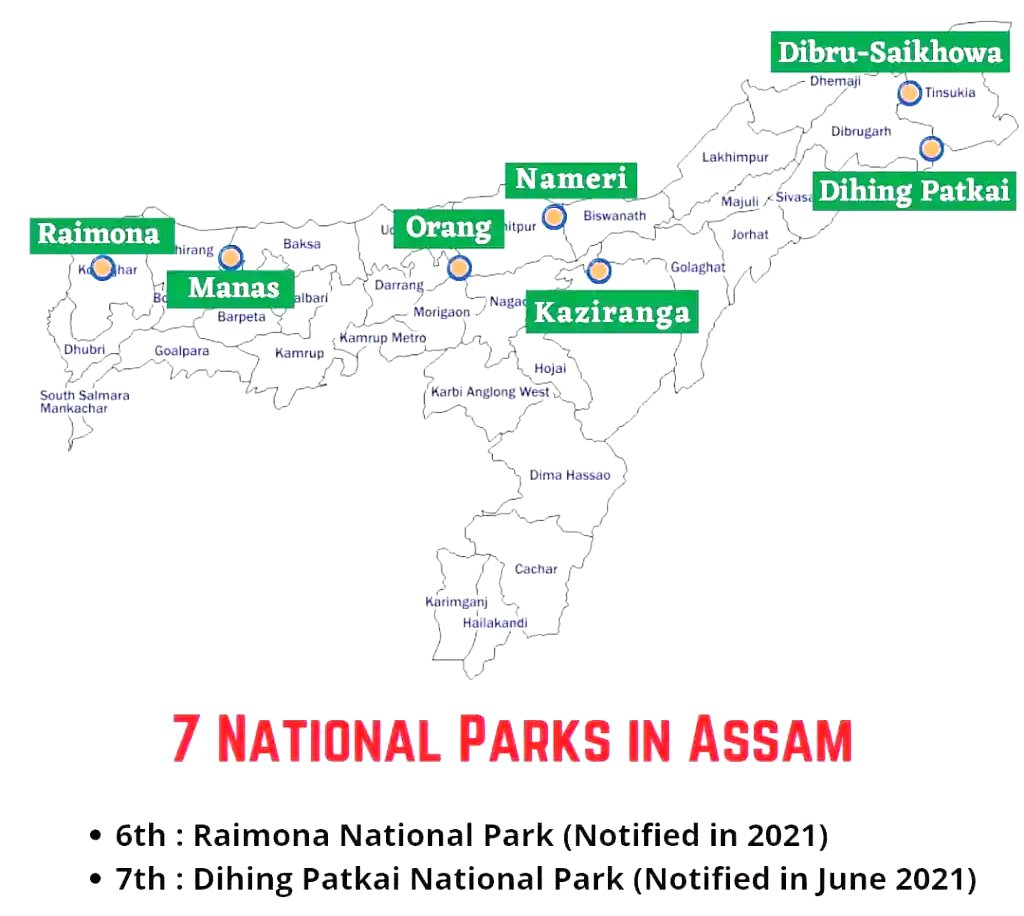Kaziranga National Park | 11 Feb 2022
For Prelims: Kaziranga National Park, Carbon Sink.
For Mains: Causes for the Kaziranga National Park to become a net Carbon Emitter.
Why in News?
Recently a research published, which showed that Kaziranga National Park in Assam, is releasing more carbon than it is absorbing.
- It also showed that as the planet warms further, the ability of the Kaziranga National Park (KNP) to absorb carbon would further decrease.
- Earlier, it was found that the Amazon rainforest is now emitting more carbon dioxide than it is able to absorb.
- Researchers found that Kaziranga absorbed the most amount of carbon dioxide during the pre-monsoon season of March, April and May.
- A forests, or trees in a forest, take up carbon dioxide for the process of photosynthesis and release carbon dioxide when they breathe.
How is KNP a Net Carbon Emitter?
- Unique soil:
- The soil of the region is home to a large population of bacteria that release carbon dioxide as they breathe, which adds to the carbon dioxide being emanated by other organisms, including trees.
- Decrease in Photosynthetic Activity:
- The photosynthetic activity of trees during the monsoon decreases due to increased cloud cover. Hence, the ability of the forest to absorb carbon dioxide also decreases.
- The situation remains the same during the post-monsoon and winter months, making the forest a net carbon emitter.
- Less rainfall from transpired water:
- The scientists analyzed the isotopes in the transpired water and observed a strong link between the water and carbon cycles of the forest.
- There is a decreasing trend in the rainfall coming from the transpired water in the pre-monsoon months which are responsible for the highest carbon absorption.
- Transpiration is a process that involves loss of water vapour through the stomata of plants.
- Stomatal openings are necessary to admit carbon dioxide to the leaf interior and to allow oxygen to escape during photosynthesis.
What are the Key Points Related to KNP?
- Location: It is located in the State of Assam and covers 42,996 Hectare (ha).
- It is the single largest undisturbed and representative area in the Brahmaputra Valley floodplain.
- Legal Status:
- It was declared as a National Park in 1974.
- It has been declared a tiger reserve since 2007. It has a total tiger reserve area of 1,030 sq km with a core area of 430 sq. km.
- International Status:
- It was declared a UNESCO World Heritage Site in 1985.
- It is recognized as an Important Bird Area by BirdLife International.
- Biodiversity:
- It is the home of the world's most one-horned rhinos.
- Pobitora Wildlife Sanctuary has the highest density of one-horned rhinos in the world and second highest number of Rhinos in Assam after Kaziranga National Park.
- Much of the focus of conservation efforts in Kaziranga are focused on the 'big four' species - Rhino, Elephant, Royal Bengal tiger and Asiatic water buffalo.
- Kaziranga is also home to 9 of the 14 species of primates found in the Indian subcontinent.
- It is the home of the world's most one-horned rhinos.
- Rivers and Highways:
- National Highway 37 passes through the park area.
- The park also has more than 250 seasonal water bodies, besides the Diphlu River running through it.

